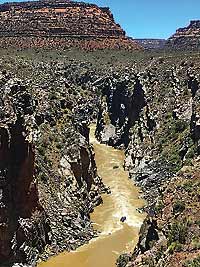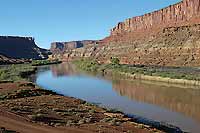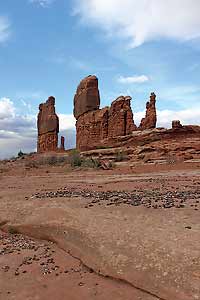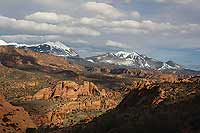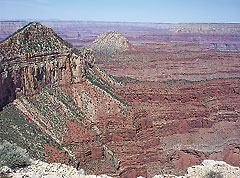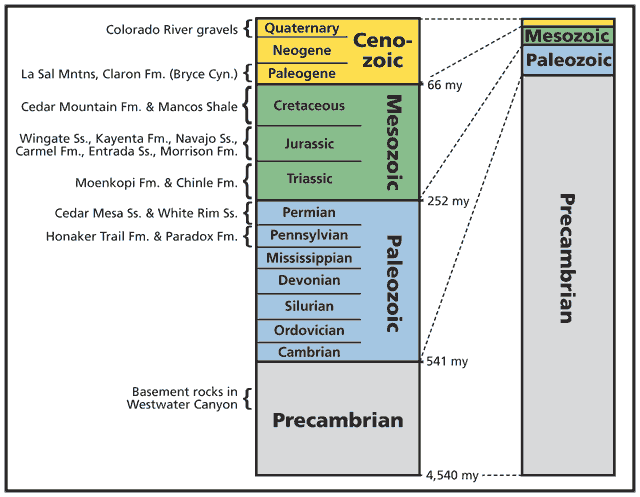GEOLOGY HAPPENINGS February 2020 |
||||||||||||
| Mostly Mesozoic: Geologic Time and Moab by Allyson Mathis |
||||||||||||
Geologic time is measured in millions of years, stretching to billions of years. The oldest rocks near Moab, the igneous (“fire-born”) and metamorphic (altered through heat and pressure) rocks in Westwater Canyon, are about 1,700 million (1.7 billion) years old. The Wingate Sandstone that makes up the red cliffs soaring above the Moab Valley and holds up prominent mesas like Dead Horse Point is approximately 200 million years old. Just this span of geologic history as documented in some of the rocks found near Moab makes even the entire extent of human occupation on the Colorado Plateau of approximately 12,000 years a mere blimp. The earth is
No single locale contains rocks that represent the entire expanse of geologic time because the earth is a dynamic planet. The theory of plate tectonics explains how older parts of the crust is recycled by being subducted down into the mantle, and new crust is formed where plates spread apart. Weathering and erosion also destroys older rocks and leads to the deposition of new ones. The area around Moab is notable not for having the oldest or youngest rocks on the Colorado Plateau, but it does contains rocks that were formed during each of the four major subdivisions of geologic time, from the Precambrian to the Cenozoic. Despite this great range in the age of rocks near Moab, the Mesozoic section is the area’s main geologic calling card. Most rock layers that are exposed in the Moab area are Mesozoic in age from the red siltstones of the Moenkopi Formation to the gray Mancos Shale exposed in the Book Cliffs to the north.
Precambrian rocks make up the core (aka, the basement) of continents, such as that underneath the Colorado Plateau, but these rocks are only exposed in a few areas in the region: in Westwater Canyon north of Moab, in Colorado National Monument near Grand Junction, and in Grand Canyon. These basement rocks that were formed and altered by intense heat and pressure record the story of how North America became larger as moving tectonic plates collided. Paleozoic With the exception of the deeper canyons in along the Colorado River south of Moab where late Paleozoic sedimentary rocks such as the Cedar Mesa and White Rim sandstones may been seen, Paleozoic Rocks are generally not exposed on the earth’s surface near Moab. The best place on the Colorado Plateau to see Paleozoic rocks is Grand Canyon where the river has cut into these older rocks. Mesozoic
Cenozoic None of the sedimentary rock layers near Moab are Cenozoic in age, but Cenozoic geologic history is recorded in the landscape itself as it was sculpted in the recent geologic past. The most prominent example of Cenozoic rocks near Moab are the igneous rocks in the La Sal Mountains. The youngest geologic deposits near Moab are gravel deposits of the Colorado River formed in the last few hundred thousand years. Farther afield, the Claron Formation in Bryce Canyon was deposited in the early Cenozoic.
|
||||||||||||
|
||||||||||||
